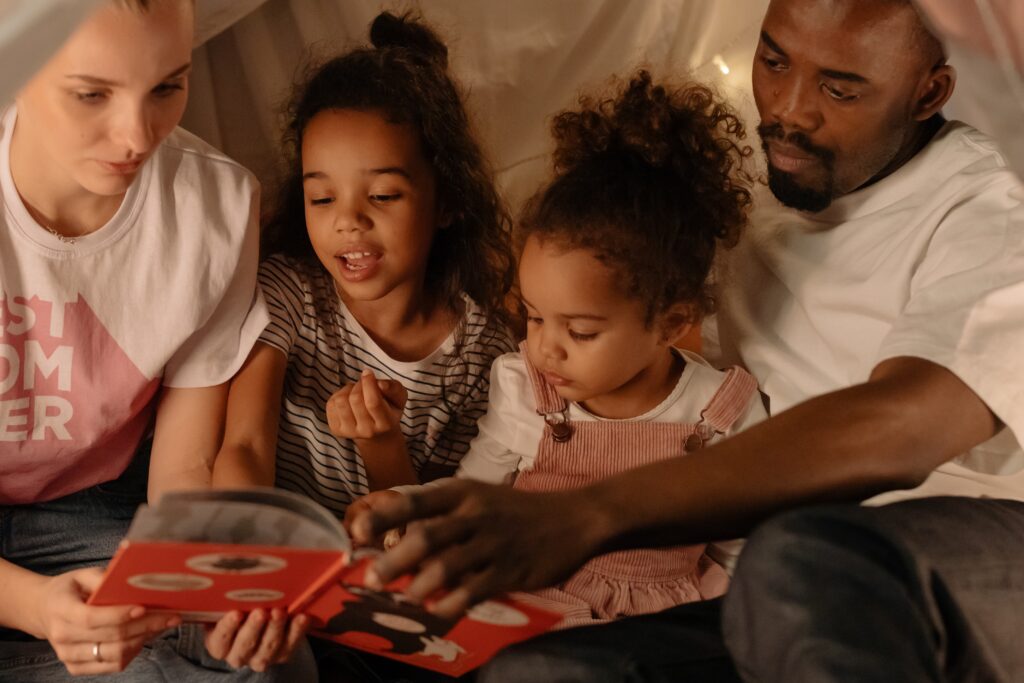When it comes to language learning, the home environment is often just as important to get right as the school environment. The relationship between the student, the parents and the teachers is crucial to setting the right tone and enabling the student to flourish, but parents may not know exactly how to help their child improve their English at home. Here are my top ten tips that you can help your child to improve their English in your home.
Speak English at home
If you can speak any English at all, a really great way to improve your child’s English is to practice speaking together. It doesn’t matter if your English isn’t great or is quite limited – the point is to show your child that you’re willing to improve your language skills. Often practising speaking in a different language can be stressful; it makes people feel vulnerable and worried about making mistakes. Seeing an adult you trust and respect be willing to try something can make teenagers feel safe to practice too.

Watch English TV shows and films together
Not only can watching English language media be a really fun way to engage with both the language and the culture of other countries, but it can be a great way to pick up new vocabulary and slang too. Often, language textbooks use outdated and cheesy language that native speakers don’t use, so watching recent TV shows and films can help students to learn some modern expressions that native speakers actually use in daily life. After you’ve finished watching, you can discuss the show together with your child (in English perhaps!). You can ask them questions, such as:
- Who was your favourite character and why?
- Did you enjoy the ending? Why or why not?
- Tell me five new words you just learnt.
Watch English films/TV shows together… with English subtitles
When you’re watching English media together, you should turn on English subtitles. Studies have shown that language learners pick up more language with their target language’s subtitles on, compared with no subtitles at all or subtitles in their native language.
Using English subtitles can help language learners to keep track of new words or phrases they’ve never heard before, as well as improve listening skills. If you simply use subtitles in your native language, however, you’re more likely to read those rather than focus on the English you’re hearing, so avoid the temptation to use subtitles in your first language.

Encourage your child to read widely and appropriately
Reading in English is one of the most effective things a language learner can do to build both their vocabulary and their innate understanding of grammar. Of course, reading in a second language can be hard and even harder yet can be trying to get a teenager to put down their phone and read a book! So what can parents do to encourage reading more books in English?
Buy (or lend from a local library) a range of different English novels, magazines and comics for your child… but here’s the catch: you should only select texts that are a suitable level of difficulty. So many of my students’ parents with very good intentions buy their children classic novels written in the 1800s, novels that most native speakers wouldn’t pick up unless they were studying English Literature at university! This should be discouraged since students would feel frustrated reading these completely inaccessible texts, making them associate reading in English as a hard chore rather than something enjoyable.
It is most effective to read a text where you understand 95% of the words and encounter only 5% new words. This is called the ‘zone of proximal development’ and will enable students to reinforce vocabulary and grammar patterns they already know, as well as pick up a small amount of new vocabulary through context.
You could try:
- Graded readers: these are simplified versions of classic texts and you can purchase these in varying levels of difficulty. Try the Pearson English Graded Readers to start, but make sure you pick the correct level.
- Graphic novels: through picture cues and engaging illustrations, reading is made all the more fun and visual clues are given to help students figure out the meaning of new words. I recommend the graphic novel version of A Wrinkle in Time as a good place for a B2 reader to begin.

Sing together
Singing in the target language is a fantastic way to help shy speakers practice their English speaking, learn new vocabulary, and have fun! Did you know that in a recent study it was found that students could remember more new words in a second language when singing than by simple repetition alone? Find an English artist that your child really likes and listen to it together in the car, cooking together or just relaxing. Even better if you can both learn the lyrics and sing along together!
Pick songs that have repetitive catchy lyrics and where the words are sung clearly for the best results.
You could try these popular songs:
- Shotgun by George Ezra
- What Makes You Beautiful by One Direction
- Uptown Girl by Westlife (an oldie but a goodie!)
In a nutshell
You might have noticed a word I have repeated a lot in this post: together.
The single most powerful thing you can do is be involved, show your child you care and value their language learning. The more you invite English into your daily lives at home, the better your child’s English will become.
